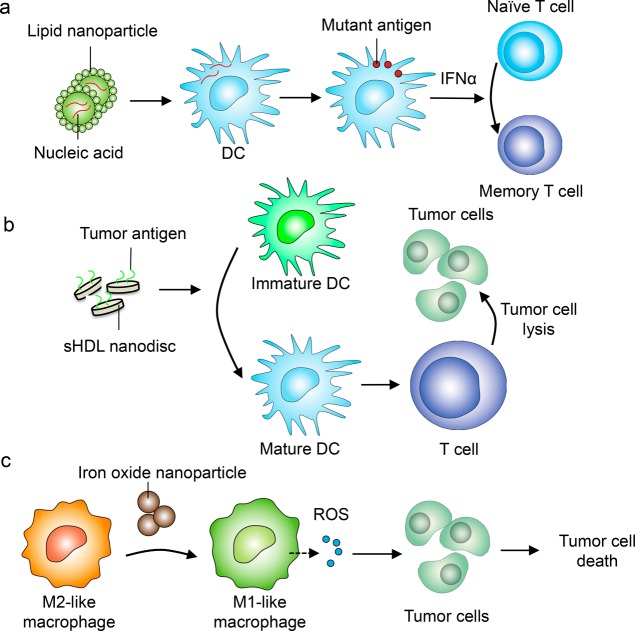Figure 1.
Examples of nanomedicine strategies to enhance antitumor immune responses. (a) Lipid-based nanoparticles encapsulated with nucleic acids such as RNA encoding for mutant antigens can be designed to home to professional antigen-presenting cells (APCs) such as dendritic cells (DCs). The translation and cross-presentation of the mutant antigens by DCs then primes antitumor memory T cell responses.12 (b) Nanomedicine can also help improve the efficacy of cancer vaccines. Synthetic high-density lipoprotein (sHDL) nanoparticles decorated with tumor antigens can promote the more-efficient delivery to APCs in lymphoid tissues, resulting in improved DC maturation and T cell-mediated tumor killing.7 (c) Beyond delivery, nanoparticles themselves can also promote antitumor immune cell phenotypes. Iron oxide nanoparticles, for example, can polarize tumor-associated macrophages from a protumor M2-like to an antitumor M1-like phenotype, which releases reactive oxygen species (ROS) to induce tumor cell killing.23

